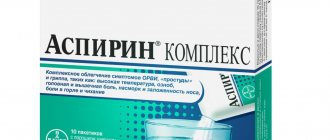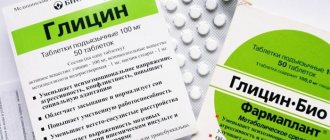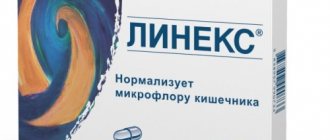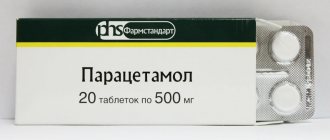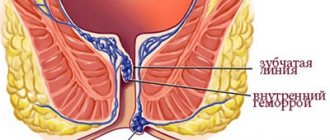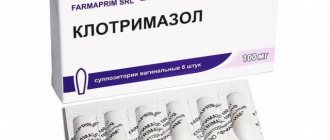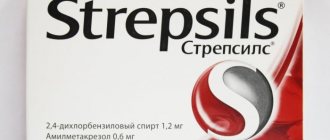Spasmalgon for nursing: prohibitions and permissions for use
For acute dental, headache, muscle pain, and abdominal spasms, you should take analgesic antispasmodics.
But not all of them are allowed during breastfeeding. For example, it is prohibited to drink Spazmalgon during lactation, as stated in the instructions for the drug.
In very rare cases, the doctor still prescribes these pills to a nursing mother, but only on the condition that the child is weaned from the breast and transferred to artificial formula (for a time until the medicine is completely eliminated from the woman’s body).
Composition and effect of the drug
Spazmalgon is a combination drug against pain. It contains the following components:
- Pitophenone hydrochloride is a myotropic antispasmodic. Expands the lumen of blood vessels, reduces the tone of smooth muscles, which can cause pain.
- Phenpiverinium bromide is a neurotropic antispasmodic. It also eliminates muscle spasm, but not through relaxation of blood vessels, but through inhibition of nerve impulses.
- Metamizole sodium is a non-narcotic analgesic. Blocks the action of enzymes responsible for the formation of the pain reflex. It does not eliminate the cause of the spasm.
The main effect of Spasmalgon is to relieve pain and eliminate spasms. But the medicine has additional functions. For example, in case of pain due to inflammation, the body secretes more protective antibodies, which provoke even greater tissue swelling. If there is no pain due to the drug, then the swelling begins to decrease.
Spasmalgon can be taken as an antipyretic. This is due to the ability of metamizole sodium to temporarily block the effect of prostaglandin E1 on the heat production center in the hypothalamus. This leads to the dilation of blood vessels and an increase in heat transfer, causing the body temperature to begin to decrease.
Spasmalgon should not be taken while breastfeeding due to the fact that more than 7% of the medicine passes from the blood into milk. As a result, the child may develop an allergic reaction and experience all the adverse reactions from the drug (and there are quite a lot of them).
Rules for taking during lactation
The instructions indicate that people over 6 years of age can take the drug. Children under 15 years of age are given half a tablet, adults drink 1–2 tablets. (depending on the intensity of pain).
The medicine should be taken within half an hour of the last meal.
The analgesic effect lasts 2–4 hours, then taking Spazmalgon can be repeated (but only if the daily dose does not exceed 6 tablets).
The instructions indicate that pregnant and lactating women should not take Spazmalgon. But if other pain relievers have not helped, the doctor may prescribe this drug to a patient suffering from severe cramps.
There is an important condition - breastfeeding will have to be stopped until all components of the drug are removed from the body (the half-life is 10 hours, but complete removal of the substances will take place no earlier than after 2 days).
Contraindications and side effects
Spasmalgon is a strong drug. Its advantage is the rapid relief of pain. But there is also a significant disadvantage - the drug has an inhibitory effect on the red bone marrow and inhibits hematopoiesis, which can lead to disturbances in normal blood clotting.
The medicine also has an undesirable effect on the brain centers responsible for blood pressure.
The adult body is still able to withstand such effects, but an infant who has received a dose through breast milk is more sensitive to such toxic effects.
A serious disadvantage of Spasmalgon is that the antispasmodic leads to a decrease in the level of leukocytes, which negatively affects the immune defense. The child’s immunity is still extremely weak, so even a slight weakening seems to “open the door” to various infections.
Due to the increased sensitivity of the child's body, side effects are more likely to occur in a baby than in an adult. If a mother takes Spazmalgon and does not stop breastfeeding, then there is a high risk that the baby will develop:
- intestinal obstruction;
- nausea, vomiting:
- headache;
- weakness due to decreased blood pressure;
- urinary retention.
If the child has diseases, then Spazmalgon can provoke complications. It is strictly forbidden to take this remedy for decompensated heart failure, chronic constipation, liver and kidney dysfunction, and bone marrow pathologies.
How to replace the drug
Spasmalgon is a powerful pain reliever. But, as already mentioned, it is not suitable for women during lactation. In case of severe pain, it is better to replace it with agents whose substances penetrate into breast milk in minimal quantities and are not capable of causing serious harm to the baby. Such drugs are Ketoprofen, Naproxen and Ibuprofen.
In these products, the molecules of medicinal substances are quite large, so they hardly penetrate through the blood into the ducts where milk is produced. On average, the concentration of these medications in breast fluid will be 0.1–0.8% of the total dose taken by the woman. In addition, the drugs have few side effects and they are not as unpleasant as Spazmalgon.
Despite the fact that Ketoprofen, Naproxen and Ibuprofen are safer than Spazmalgon, they are still not completely harmless. They should be taken only according to strict indications and after examination by a doctor.
The latter is a prerequisite, since it is important to find out the cause of the pain.
Perhaps we are talking about a serious disease in which antispasmodics are useless; complex treatment is required, including antibiotics, anti-inflammatory, antitumor drugs and even surgery.
Source: https://mammolog.guru/beremennost-i-laktaciya/zdorove-kormyashchej/spazmalgon.html
Spasmalgon during breastfeeding
Breastfeeding is a happy period of life for every mother. It establishes an additional connection with the baby and supplies him with all the necessary vitamins and minerals.
During lactation, you must try to avoid diseases as much as possible. However, this is not always possible. A large number of medications are not allowed to be taken, as they can harm the growing body.
It is not always possible to endure pain for a long time.
Is it possible to use Spazmalgon while breastfeeding? After all, the drug was specially developed to eliminate painful sensations of any origin. The instructions contain information that the medicine should not be used during lactation. However, in some cases it is impossible to refuse the medication.
Main characteristics
Spasmalgon is a drug that is classified in the combination group. With its help, you can eliminate pain, relieve spasms and eliminate inflammation within a few minutes. There are several medication options. The choice of one of them depends on the individual characteristics of the disease:
- pills;
- liquid packaged in ampoules.
The drug contains a large number of active components. Among them, metamizole sodium and fenpiverinium bromide have a positive effect. To improve the therapeutic effect, the ingredients also include a number of additional active substances. Their use produces a softer and faster effect.
The drug is prohibited during breastfeeding
The components, penetrating into the body, help relax smooth muscles. Additionally, the temperature decreases, the inflammatory process is eliminated, and, as a result, the pain completely disappears.
It should be noted that the medicine slows down the digestive system. However, thanks to this, it is possible to relieve spasms, normalize blood circulation and pressure.
The effect of the components will be exerted on the body in just fifteen minutes.
We recommend reading: Citramon during breastfeeding
Spasmalgon can eliminate pain within a short time. The positive effect is achieved by relaxing the main muscles of the internal organs. The analgesic can be used to treat a large number of diseases and their negative manifestations:
- pathology in the functioning of the bile duct and its excretory tract;
- chronic inflammation in the intestines;
- elimination of pain after surgery;
- automatic reduction of individual parts of internal organs;
- periodic pain in women that occurs during the menstrual cycle.
The drug can relieve severe pain in joints and muscles within a few minutes. That is why Spazmalgon is used to relieve inflammation in the sciatic nerve. The medicine is recommended for use during the rehabilitation process after surgery. Use allows you to quickly and effectively lower body temperature during a cold, inflammation or infection.
When should the medication not be used?
When breastfeeding, it is not allowed to use Spazmalgon in the following cases:
- The woman previously had hypersensitivity to one or more components that are included in the composition.
- Blood circulation disorders.
- Improper functioning of the kidneys, gall bladder or bladder.
- The presence of pathologies in the functioning of the heart.
- Diseases of the gastrointestinal tract were previously diagnosed.
- Liver disorders.
- Diagnosed adenoma.
- The pressure inside the eye is always increased, which leads to disruption of the nerves.
- Preparing the patient for surgery.
The instructions prohibit the use of Spasmalgon for nursing mothers. The drug should not be taken during pregnancy.
Among the side effects, burning and dry mouth cause particular discomfort. In some cases, a decrease in blood pressure, a rapid heart rate and blue discoloration of the mucous membrane were additionally recorded.
A woman may feel dizzy and have blurred vision.
Sometimes there is a deterioration in the functioning of the genitourinary system. Urea may stop excreting altogether or contain a large amount of protein. If, in addition, a woman has inflammation in the kidney area, then the urine may be colored red.
Cases of allergic reactions have also been recorded. It manifests itself in the form of excessive swelling, inflammation or redness of the mucous membranes. An overdose can be fraught with mental disorders.
If use cannot be avoided
The duration and methods of treatment depend on the nature and intensity of symptoms. Only a doctor can correctly determine the course of treatment based on the test results. The dosage should not exceed three tablets per day. The duration is also fixed at three days.
In some cases, the drug can be used during breastfeeding.
Before use, the doctor and patient analyze the following indicators:
- toxicity of individual components and their direct effect on the body of the mother and baby;
- how high the content of the substance will be in the milk after use;
- what effect each individual component will have on the internal organs of the baby;
- duration of therapeutic course of treatment;
- is there hypersensitivity to individual components;
- the likelihood of an allergic reaction.
Tablets during lactation and pregnancy should only be used as a last resort. The fact is that the product contains a number of side effects that can negatively affect the condition of the mother and child. The medicine has not yet undergone all the research in this area, so scientists have not been able to form a final opinion.
Today there are a huge number of drugs that have less negative effects on the human body.
While taking Spazmalgon, the child should be switched to artificial nutrition
How dangerous is the drug?
Metamizole sodium poses a great danger to the baby's body. This drug has a toxic effect, so it can provoke the development of certain pathologies.
The component has a negative effect on most of the baby’s internal organs. That is why Spazmalgon is not recommended for use during breastfeeding.
During pregnancy, it also negatively affects embryonic development.
The drug poses a high risk in the third trimester. Due to its negative impact, labor may subsequently be weakened or completely eliminated.
The ingredients inhibit the production of essential components that are necessary for quick labor. Excessive consumption can generally lead to a deterioration in the breathing and heart function of the fetus.
For a woman, the situation is dangerous due to bleeding, which increases the risk of infection.
Due to the presence of toxic components in the composition, Spazmalgon is prohibited for use during lactation.
Scientific research has confirmed the theory of a large number of side effects that may occur during this period.
If a course of treatment is mandatory, then it is recommended to transfer the baby to an artificial feeding option. The natural process can be restored only two days after the end of treatment.
Source: https://floragaz.ru/mamam/spazmalgon-kormlenii-grudyu
Contraindications and side effects
Spazmalgon, like any medicine, has contraindications:
- hypersensitivity to the components of the drug;
- diseases of the hematopoietic system;
- functional kidney failure;
- hypotonicity of the gallbladder and bladder;
- cardiovascular diseases;
- diseases of the digestive tract (intestinal obstruction, colon hypertrophy);
- functional liver failure, porphyrin disease;
- prostate adenoma with urination problems;
- increased intraocular pressure, damage to the optic nerve;
- pathological diseases that require surgery.
According to the instructions, the drug should not be taken during pregnancy and breastfeeding.
Possible side effects such as burning, epigastric pain, dry mouth. The patient has pain and dizziness, hypohidrosis (weak sweating), blurred vision at close range, and urinary disorders. In some cases, blood pressure decreases, heart rate increases, and the skin and mucous membranes become bluish in color.
Possible disorders of the genitourinary system: reduction or complete cessation of urine output, high levels of protein in the urine. Sometimes inflammation of the kidneys occurs and the urine turns red. If you take it for a long time, there is a risk of a decrease in the level of platelets, leukocytes or granulocytes in the blood.
Allergies in the form of nettle fever, bronchial obstruction, and anaphylaxis are possible. Other side effects: angioedema, inflammatory lesions of the skin and mucous membranes, Lyell's syndrome.
In case of an overdose, the oral cavity dries out, vomiting occurs, vision is impaired, and blood pressure decreases. Exceeding the dosage risks mental disorders, liver or kidney disorders, and muscle spasms.
Is spasmalgon possible with gw
Published on: 06/16/2019 adminComment: 0
The list of drugs for eliminating pain in a mother while breastfeeding is strictly limited. You need to take medicine if you cannot tolerate the discomfort and folk remedies do not help. For the safety of the baby’s health, there are several drugs that relieve pain. They come in different dosage forms.
What painkillers can you take while breastfeeding?
Many medications are prohibited for use during lactation (Analgin, Citramon). They can disrupt the functioning of the systems and organs of the child’s body. Painkillers for breastfeeding (breastfeeding) will not harm if the nursing mother follows the recommendations for use:
- Use only approved pain relief products during lactation. This aspect is indicated in the instructions for use.
- Use pain medication if the discomfort is severe, but not regularly.
- Use the full dosage of the medicine to numb the problem area.
- Take the medicine immediately after breastfeeding your baby. The drug will be eliminated before the next lactation.
Pain reliever during lactation contains a certain active ingredient. It inhibits pain receptors and eliminates unpleasant symptoms. The drugs are available in different dosage forms, each of which has its own advantages.
Pills
To eliminate pain and discomfort during lactation, analgesics and antispasmodics are used. The advantages of oral administration of drugs during breastfeeding lie in the systemic effect on the body. You can take one tablet, which will relieve pain, reduce inflammation, and reduce temperature.
Permitted painkillers for nursing mothers in tablet form:
- Paracetamol (Efferalgan, Kalpol, Fervex) - allowed during lactation to eliminate ear and toothache, and reduce fever. The product is safe and does not have a negative effect on the baby’s health. It is recommended to take 500 mg 3 times a day at 6-hour intervals. Duration of treatment – no more than 3 weeks.
- Ketorolac (Ketalgin, Ketorol, Ketanov) is a nonsteroidal anti-inflammatory drug approved for breastfeeding. It has an antipyretic and analgesic effect. Prescribed 10 mg 3-4 times a day, to relieve severe pain - 20 mg every 5-6 hours.
- Ibuprofen (Nurofen, Ibufen) - used in nursing mothers to reduce inflammation and relieve pain. It is recommended to take 200-400 mg at intervals of 6-8 hours.
Candles
Antispasmodics and painkillers are used when feeding a child to eliminate pain in the head, lower back and abdomen. Medicines in the form of rectal suppositories have a good therapeutic effect due to the rapid rate of absorption. The means used are based on:
- Papaverine – reduces vascular tone, eliminates muscle spasm of hollow organs. Dosage – 1-2 suppositories 2-3 per day with a break of at least 4 hours.
- Paracetomol (Cifecon-D, Efferalgan) - used to treat migraines, toothaches, headaches, neuralgia, and fever relief. It is recommended to use 1 suppository 4 times a day every 6 hours. The course of treatment is 2 days.
- Ibuprofen (Ibuflex, Ibuprofen) - used for mild to moderate pain in the ears, throat, head, and have an antipyretic effect. Use 1-2 suppositories 4 times a day. The course of treatment for fever is 3 days, for pain relief – 5 days.
Ointments
Medicines for local (external) use differ favorably from other forms of drugs in that they are absorbed into the blood in a minimal amount. They can be used during lactation for a long time - 3-4 weeks.
Effective pain relievers for breastfeeding in the form of gels, creams and ointments:
- Diclofenac (Diklak, Ortofen, Voltaren) – helps relieve pain and eliminate inflammation (sciatica, osteochondrosis, spinal hernia, sprains). The daily norm is 2-4 g 3-4 times a day.
- Ketoprofen (Febrofid, Bystrumgel, Fastum) - acts directly on the source of pain and inflammation, eliminates tissue swelling. Apply no more than 3 cm 2 times a day. The course of treatment is 2 weeks.
- Menthol (FinIce, Gevkamen) – eliminates discomfort in the back, muscles, joints, and is used to relieve inflammation during colds. Application is carried out by applying a 2 cm strip of product to the problem area. You can use menthol ointments and gels no more than 3 times a day.
Tablets for headaches during breastfeeding
During lactation, a nursing mother often suffers from lack of sleep; her hormonal system changes. All this causes headaches and migraines. In most cases, a woman just needs to rest, but there are situations when the pain is unbearable. To eliminate it, it is recommended to use tablets approved for lactation according to the following scheme for 3 days:
- Panadol;
- No-shpa;
- Ketorol;
- Paracetamol;
- Efferalgan.
Medicines for toothache during lactation
Some medications will help relieve discomfort before going to the dentist. They are used to relieve acute pain due to injuries, deformation, and inflammation of the oral cavity. Painkillers allowed during lactation are presented in several dosage forms:
- Kalgel - rubbed no more than 6 times a day into the inflamed part of the gum.
- Traumeel ointment - lubricate the problem area 2-6 times a day for 2-4 weeks.
- Ketanov tablets - prescribed 10 mg in 1-2 doses. Duration of treatment – 3 days.
- Sprays or ampoules of Lidocaine, Ultracaine - used as a local anesthetic. The product is applied to the gums no more than 4 times a day.
- Gel Kamistad - apply 0.5 cm 3 times a day. Duration of use – 1-2 days.
Pain relief after cesarean
Pain in the groin area and suture area is observed in women after surgical delivery. This is due to damaged ligaments, scarring on the uterus during birth by cesarean section. This condition can be treated using medications approved for lactation:
- No-spa - tablets (1-2 pcs.) should be taken only with severe abdominal cramps 3-4 times a day. For a quick effect, it is better to use injections of the drug - 1 ampoule three times a day. The duration of use should not exceed 1-2 days.
- Ultracaine - injections are made twice a day, 5-15 ml at a time. The painkiller is not recommended for use on an ongoing basis.
Banned painkillers while breastfeeding
Some popular drugs are not recommended for a nursing mother to use. List of painkillers prohibited during lactation by active substance:
- nimesulide (Nise, Nimesil, Mesulide, Aponil);
- acetylsalicylic acid (Citramon, Askofen, Aspirin);
- metamizole sodium (Tempalgin, Analgin-quinine, Spazmalgon, Baralgin, Analgin-Ultra);
- phenobarbital (Pentalgin, Tetralgin);
- procaine (Novocain, Menovazin);
- codeine, caffeine (Parcocet, Solpadeine).
Source: https://detki.shukshin-net.ru/spazmalgon-mozhno-li-pri-gv/
Is it possible to take Spazmalgon while breastfeeding?
Spasmalgon is a drug that is classified in the combination group. With its help, you can eliminate pain, relieve spasms and eliminate inflammation within a few minutes. There are several medication options. The choice of one of them depends on the individual characteristics of the disease:
- pills;
- liquid packaged in ampoules.
The drug contains a large number of active components. Among them, metamizole sodium and fenpiverinium bromide have a positive effect. To improve the therapeutic effect, the ingredients also include a number of additional active substances. Their use produces a softer and faster effect.
https://www..com/watch?v=ytcopyrightru
The components, penetrating into the body, help relax smooth muscles. Additionally, the temperature decreases, the inflammatory process is eliminated, and, as a result, the pain completely disappears.
It should be noted that the medicine slows down the digestive system. However, thanks to this, it is possible to relieve spasms, normalize blood circulation and pressure.
The effect of the components will be exerted on the body in just fifteen minutes.
Spasmalgon can eliminate pain within a short time. The positive effect is achieved by relaxing the main muscles of the internal organs. The analgesic can be used to treat a large number of diseases and their negative manifestations:
- pathology in the functioning of the bile duct and its excretory tract;
- chronic inflammation in the intestines;
- elimination of pain after surgery;
- automatic reduction of individual parts of internal organs;
- periodic pain in women that occurs during the menstrual cycle.
The drug can relieve severe pain in joints and muscles within a few minutes. That is why Spazmalgon is used to relieve inflammation in the sciatic nerve. The medicine is recommended for use during the rehabilitation process after surgery. Use allows you to quickly and effectively lower body temperature during a cold, inflammation or infection.
Composition and pharmacokinetics
This drug is a combined analgesic that effectively eliminates muscle spasms. Its active components are as follows:
- Metamizole sodium Metamizol sodium is a pyrazolone derivative, a non-steroidal anti-inflammatory substance. It has a pronounced analgesic effect, as well as anti-inflammatory and antipyretic.
- Pitofenon hydrochloride Pitofenonum is a piperidine derivative, an antispasmodic, reduces the tone of smooth muscles, removes spasms and relaxes it.
- Fenpiverinium bromide Fenpiverinium bromide is an antispasmodic, relieves spasm of smooth muscles of internal organs, including the stomach, intestines, urinary and biliary tract.
All three of these active substances enhance each other’s effects and increase efficiency.
The list of side effects is impressive. Possible nausea, vomiting, dry mouth, increased blood pressure, heart rate, headaches, dizziness, impaired kidney function, allergic reactions.
Basic information about the drug
Spasmalgon is a combined analgesic that quickly eliminates painful syndrome, spasm, and relieves inflammation.
The drug is produced in the form of flat round tablets, a colorless liquid for injections. The tablets are packaged in blisters of 10 pieces each, and the liquid is in dark glass ampoules of 2 and 5 ml.
Active components of the drug: metamizole sodium, pitofenone hydrochloride, fenpiverinium bromide. Additional substances of the tablets: magnesium hydrosilicate, soda ash, wheat starch, lactose monohydrate, etc.
The active components of the drug relax smooth muscles, normalize temperature, eliminate the inflammatory process, and as a result, pain disappears. Substances reduce the motility of the digestive tract, relax spasmodic blood vessels, normalize blood flow and blood pressure. The drug takes effect 15 minutes after administration.
The medication relieves pain that occurs due to tension in the smooth muscles of the internal organs. A combined analgesic is prescribed to relieve pain in the following diseases:
- cholelithiasis, functional disorders of the biliary system, chronic inflammation of the colon mucosa;
- pain after gallbladder removal;
- reflex contractions of the sphincter of the bladder and ureter, urolithiasis;
- pain during menstruation.
The painkiller is used to relieve joint and muscle pain. The medicine is used for pain due to inflammation of the sciatic nerve with damage to the peripheral nerves. The medication is prescribed in the postoperative period, as well as to reduce temperature in infectious and inflammatory diseases.
